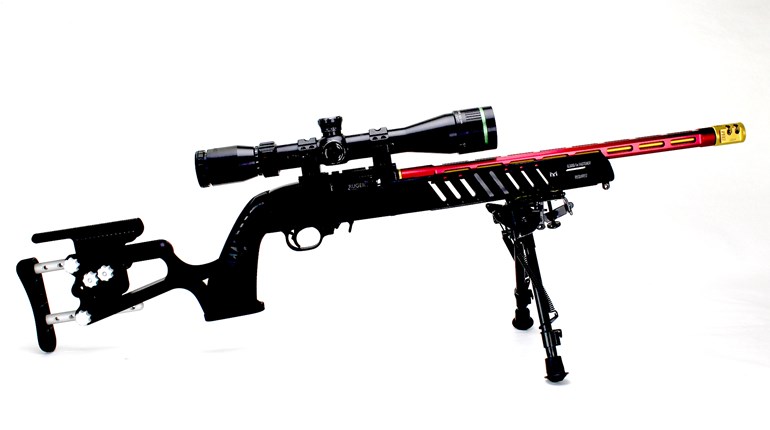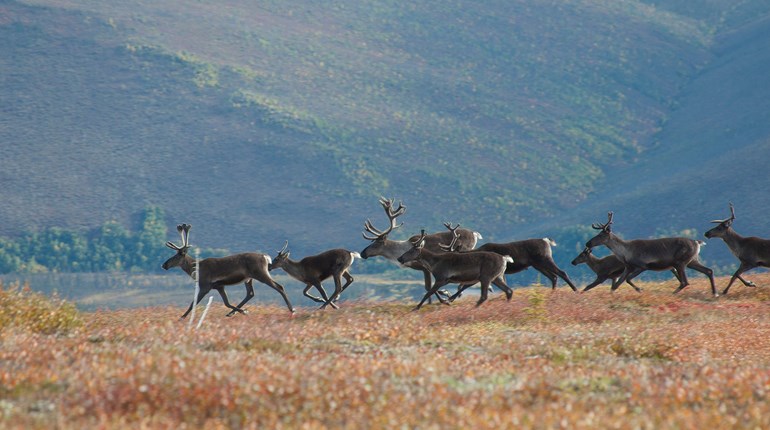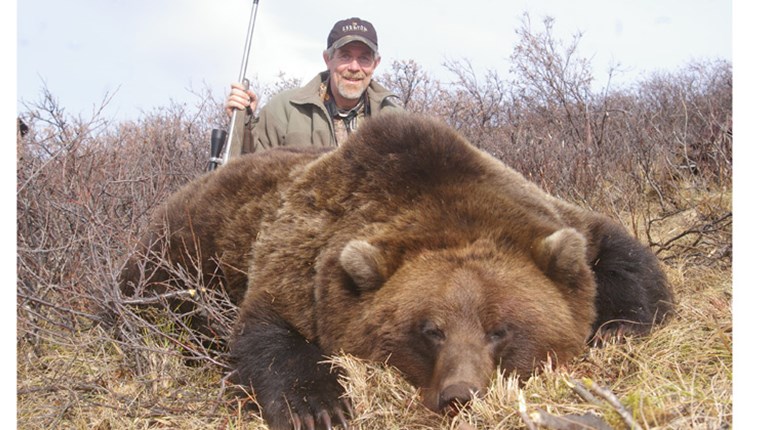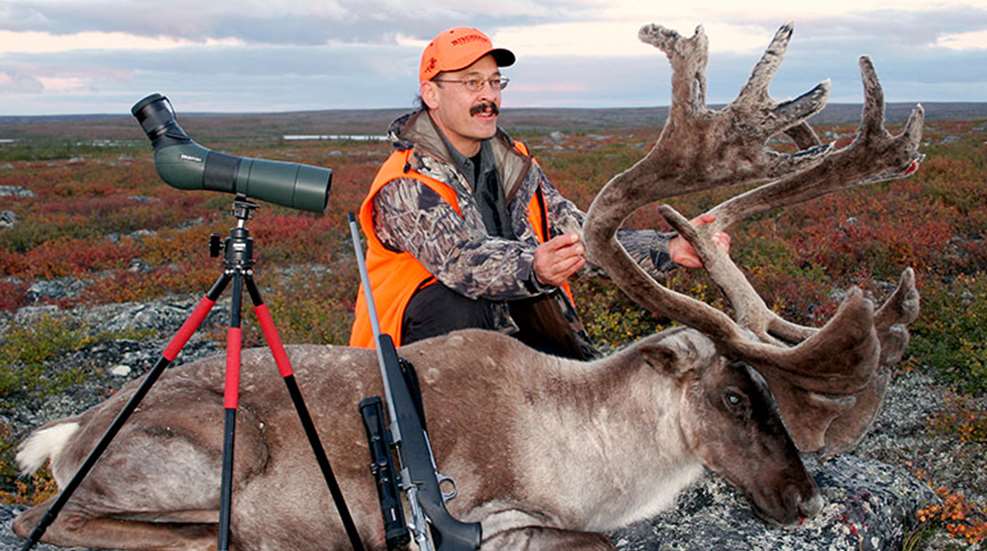
“There’s one! Way out there,” Tom announced.
“Where?"
“To the east. Almost due east. About a mile. Almost to the horizon. See the white of his neck?”
I panned across the green tundra, past scattered clumps of alders where ptarmigan called, past small lakes and ponds where green-winged teal swam, over ridges that could have been hiding moose and bears—and there was the caribou, dark, velvet antlers accenting a striking white mane. “Oh. Yeah! A white neck like that … it’s probably an older bull. Looks like a pretty decent rack.”
I dropped the binocular and swung the spotting scope toward the bull.
“What’s he look like?” my partner asked.
“Like I’d better run out there and shoot him, that’s what. Take a peek.”
While Tom, who’d already shot his caribou on this trip, wriggled behind the scope, I began stuffing my scattered gear in my pack. The Alaska Peninsula’s famous rain began drizzling down.
“He’s tall and wide and coming right toward us!” Tom crowed. “I think you can get this guy.”
“And I’d better do it quick. This weather could sock us in for who knows how long.” (That eventually proved an understatement.)
“I’ve gotta cut this guy off. Now!” And then I started to jog.
“I’ll go back to the tent and get the meat packs!” Tom shouted as I moved out.
I dropped into a low swale, powered up the far side and glassed when I crested the next rise. My bull was still out there, still on course to nearly run me over. At our combined speed, we should’ve been shaking hands before the rain really began pelting down.
Just about when I should have been close enough to shoot that caribou, I lost it. It had been walking steadily in my direction, but I dropped into a basin, eased up the far ridge, rifle ready … and found empty tundra. Nothing but miles and miles of wonderful wilderness that didn’t look so wonderful without that caribou.
For all their abundance in a landscape that appears as open as a golf green, caribou can be maddeningly difficult to find. Or in this case, re-find. The challenge, and reward, is in trying, and that’s the good news. Among all the spectacular beasts of the North, caribou is your best option for do-it-yourself success, for engaging unusual, large, “exotic” big game that’ll take you out of your whitetail/mule deer comfort zone and give you one of those wild adventures you’ve been longing for. And that’s just what Tom and I were doing.
Our adventure, like so many, started with a conversation with a guy who knew a guy who … And the next thing you know we were making plans with an air taxi/drop camp service provider in Alaska.
Here’s where it gets tricky. For every drop camp success story, I must hear 10 disaster stories. “What a waste of time and money! Sat all week and didn’t see anything but other hunters. There were four other camps on that lake and not a one got a single caribou. What a rip-off.”
That stuff happens every year. Partly this is due to the nature of drop camp providers, partly it’s due to the nature of drop camp hunters and partly it’s due to caribou. Here today, gone tomorrow: They are mobile, herding animals and often on the move. You have to plan carefully, work hard and get a little lucky to win at this game.
Information, Please
Start with good intelligence. From thousands of miles away, you must ascertain not just relative numbers of caribou in various huntable regions, but their likely timetables. Believe it or not, government can help with this. Alaska and most Canadian provinces hire biologists, game wardens and wildlife managers who keep tabs on caribou numbers to some degree. In places they conduct fairly regular counts. In many they’re involved in ongoing research as to why caribou numbers rise and fall. Demands for mining, oil exploration, hydroelectric projects and road building make it essential that governments understand caribou calving grounds, wintering grounds and migration corridors. As paid public “servants,” they’re supposed to let you know what they know. So dig in. Hop online and start searching. Or call agencies in your potential hunting area. Ask about caribou. Basically, you want to know where you’re most likely to find good numbers during your hunt, which will probably fall sometime from mid-August through September.
Caution: Don’t rely on old information on this topic. Just because your Uncle Jed’s cousin Zach and his buddies all shot Boone & Crockett bulls from a drop camp on Lake Slamdunkatrophy five years ago doesn’t mean you will. Fires, winterkill, diseases, predation, overgrazing—lots of pressures could have decimated that herd or driven it to new areas. I wouldn’t even fully trust information from last fall, but I’d certainly give it careful scouting.
Once you’ve located the range of a healthy herd of peripatetic caribou, you must begin searching for access. In most places this is an outfitter who wants to fly you in, feed you, house you and provide you with a guide. This is wonderful—if you can afford it, and if you actually want someone to do these chores. For many hunters, the act of camping, cooking and hunting for themselves in a wild land where there are no street signs, no time clocks, no cops and no cars is a big part of the attraction. In many jurisdictions caribou are the last big game nonresidents are allowed to pursue on their own. Don’t squander the opportunity.
Come Fly with Me
What independent, do-it-yourself hunters need is access, someone to take them to the jumping-off point, preferably right to the heart of caribou country. Rarely can herds be accessed from roads. Often you go in by boat, sometimes by horse. Most often it’s by air. Caribou country is just so vast and herds so scattered that you must cross hundreds of miles of “empty” to land in the honey hole. This means your second major chore in arranging a good hunt is finding this transportation. It might be offered by the outfitter/guide in the area. It might be offered by a local flying service. The distinction is sometimes blurred, but usually it means the flying service merely drops you off. It cannot provide guiding service nor supplies like tents, food and stoves. Or maybe it can. Depends on local regulations. These are usually enforced by those government fish-and-game agencies, so check with them. Then start looking for the transport you need. Google search drop camps, fly-in services and air taxis where you hope to hunt. Most will be headquartered in the nearest small town where they do a regular business hauling people and supplies in and out of the wilderness for fishing, mining, hiking, rafting, hunting and berry picking.
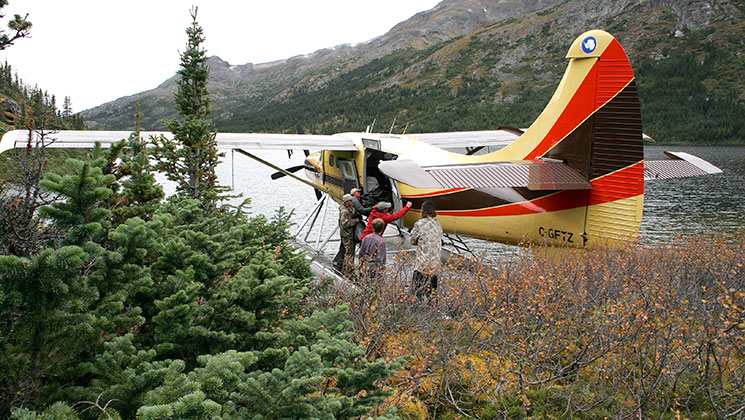
Get information on several of these if you can and ask for references. You’re putting your life in the hands of these folks, so you want to make sure they’re organized. Another staple horror story from the North is the hunter who got dropped on the tundra but not fetched back. Doesn’t happen often, but once is enough if you’re that hunter.
Beware the flying service that offers to drop you in “their” great spot. Sometimes these will be easy-access lakes or gravel strips the service knows well and can reach with minimum effort and wear and tear on their equipment. Sometimes they’re just convenient places to stick some cheechakos for a week. You need to be taken to a population of caribou, a herd you should understand fairly well from your research. Where is it likely to be during the time you’ll be there? Have local pilots, hunters or biologists seen it lately? Is it hanging around a local area or migrating? Can you get dropped off in front of the migration? Better to wait three or four days for the front of the herd to arrive than waste a week in the backwash of a herd that’s already passed.
In some places, especially during the earliest hunts in August, you can catch bull caribou in their summer haunts where they often stay put for days on end. This is usually in the mountains where they can escape lowland bugs on high, windy ridges.
Gear Up
With game and transportation scouted, begin collecting your gear. This is a deadly serious undertaking because your life will depend on what you take. Forgetting something like the tent or food could be big trouble. Make a list and check it twice. Then check it again before you load it onto the bush plane and again when you take it off. On one of my hunts the pilot flew off with all my ammunition.
Light and versatile are watchwords. You fly by the pound up here, so every ounce counts. Think like a backpack hunter: ultra-light rifles, scopes, binoculars, boots, packs, bags, tents, stoves, etc. Take plenty of freeze-dried food plus a few heavier treats. Don’t assume you’ll catch fish or shoot a porcupine for food. Take enough for at least three extra days in case you’re weathered in. An extra rain fly/tarp will help keep the tent and space around it dry for storing gear and meat, sitting out to glass, etc. Don’t forget extra fuel for the stove. Wood is often hard to find in caribou country.
A satellite phone could save your life. Include a spare battery. With a phone you can call for extraction when you need it, which could be within a day or two of landing if you get your game and bears are contesting you for the meat.
Maps are important both for planning your hunts and finding your way out in case of emergency. Don’t trust battery-powered GPS units. We were once about to strap on our packs and start a 30-mile hike to Prudhoe Bay when our delayed pilot finally showed up.
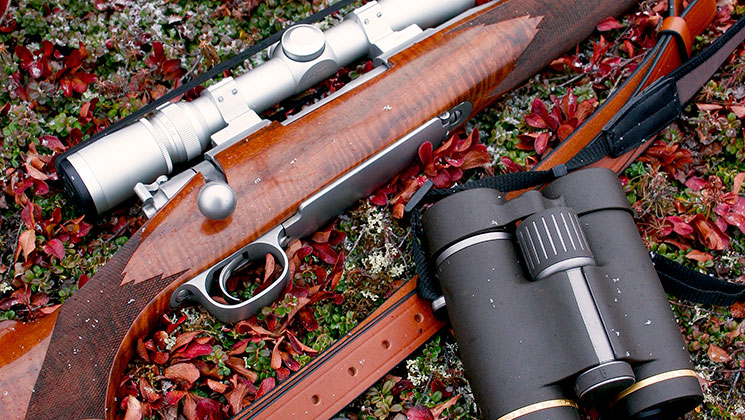
Knowledge, Skills and Confidence
Prowess in big, lonely country is critical to success. If you don’t know how to live, survive and thrive in the wilds—and possess confidence that you can navigate through it—tundra caribou wilderness will freak you out. Before launching any do-it-yourself hunt for caribou, get into smaller alpine wilderness areas to camp, hike and hunt. You must be a modern-day mountain man capable of carrying and using your limited gear to live comfortably in the outdoors where there are no phones, no roads, no neighbors and no help unless you count ground squirrels and bears. You must know how to stay out of trouble, find your way back to camp, butcher your animal, protect the meat and cape and otherwise live securely, knowing that you’ll be okay.
That done, you and your buddies (always hunt with at least one, preferably one bigger, stronger, nicer, more confident and smarter than you!) can not only plan the perfect drop-camp caribou hunt, but actually pull it off. Good luck and good hunting!
Got Him!
Oh yeah, that caribou bull at the start of this article? It stepped out of a low swale right in front of me and I whacked it with my Ultra Light Arms M20 in .284 Winchester. The velvet antlers weren’t going to rewrite the record books, but they were tall and wide and heavy. I didn’t even take snapshots before starting to cape and bone that carcass because the sky was threatening what it soon enough unloaded—three days of miserable rain. But Tom and I were able to keep the meat fairly dry and haul it back to camp and under a tarp. Fortunately it didn’t attract any bears while we lay in our mostly dry tent, telling stories and watching our food supplies dwindle until the air taxi returned for us.












